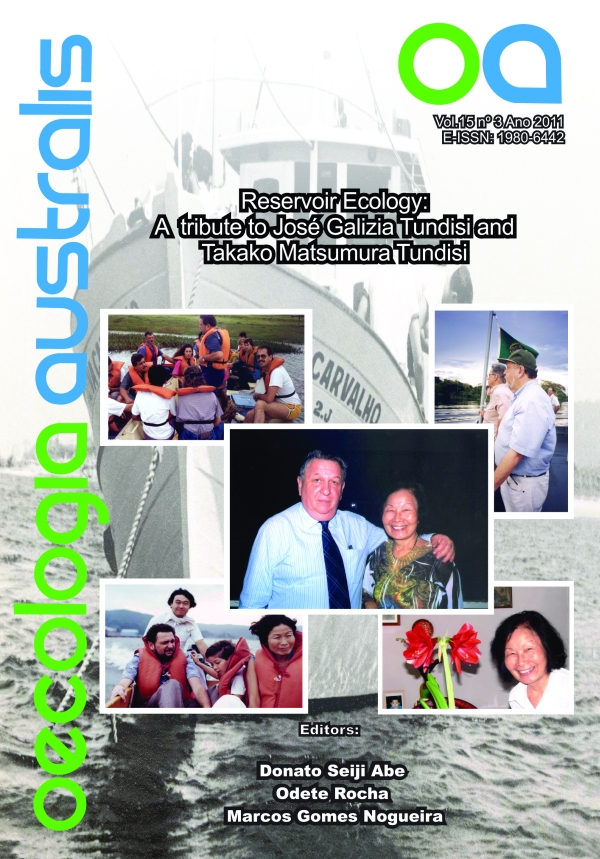ANIMAL INVADERS IN SÃO PAULO STATE RESERVOIRS
Keywords:
Biological invasions, exotic fishes, exotic mollusks, reservoirs, invasive speciesAbstract
Freshwaters are among the most vulnerable ecosystems regarding biological invasions. Reservoirs built after the last half century in São Paulo State have been continuously subjected to the introduction and establishment of alien species, both exotic and allochtonous. Here we present a short historical and the present status of some recent, still going on, biological invasion processes, for both, invertebrate and vertebrates, with emphasis on Tietê River basin. Among reservoir communities, the zooplankton has the lowest number of established exotic species, with 4 species: the cladocerans Ceriodaphnia dubia and Daphnia lumnholtzi, the cyclopoid copepod Mesocyclops ogunnus and the rotifer Kellikotia bostoniensis. Among the macroinvertebrate communities there is a fast ongoing invasion by three exotic species of mollusks, the Asian clam, Corbicula fluminea, the African-Asian gastropod, Melanoides tuberculata, and the golden mussel, Limnoperna fortunei, this latter a cause of greatest concern. However by far the community most affected by introduction of alien species is the ichthyofauna. In reservoirs of Tietê, Paranapanema and Rio Grande rivers, the main tributaries of the Upper Parana basin, the relative proportion of alien species vary approximately between 10 and 25% of the total number of species. Most introductions were derived from anthropic activities, either from direct local introduction, the so called peixamento or by accidental escape from nearby fish farming installations. Some species have profound effects on the structure of the fish community, as recently happened in Lobo (Broa) reservoir after the introduction of the Cichla kelberi. The African Sarotherodon niloticus and Tilapia rendalli and the allochtonous Plagioscion squamosissimus became the dominant species in many São Paulo state reservoirs. The complex interaction between biological invasions, water pollution and eutrophication, is the possible cause for many native species extinction going on in São Paulo State rivers and cascade of reservoirs. At short time and local scale, management actions are urgently required to eradicate or minimize the impact of exotic species in the reservoirs, especially in the small ones, and at longer time and larger scales, education and law enforcement are essential tools for both prevention of new introductions and management to the already existing problems.


